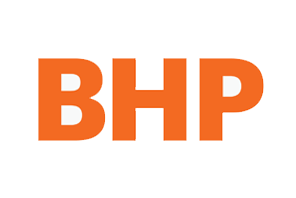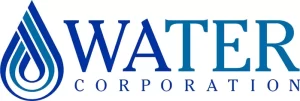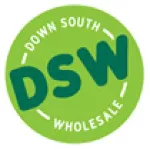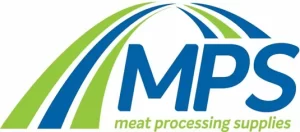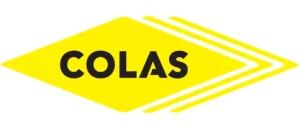This information is provided to educate our partners on the safe and effective use of our products. The material contained herein has been prepared in good faith and is intended as a valuable resource for all end users.
“RESPECT, NOT FEAR”
It is important for anyone working with chemicals on a day-to-day basis to respect but not fear the substances they handle. The word “chemical” often suggests danger and potential harm. Indeed, chemicals can be unsafe when misused or when users lack full awareness of the associated safety information.
However, when the hazards of a chemical are understood and proper handling procedures are followed, the risks can be minimised, and the product can be safely used. Respect, not fear, enables us to perform our duties safely and effectively.
Chemical safety is much like driving a car:
- If you learn the rules, follow them, and drive carefully, your car is a safe and useful tool.
- If you ignore the rules, accidents will almost certainly happen.
Similarly, if you learn how to use cleaning products properly, follow instructions, and wear the recommended safety gear, you’ll find they are safe and effective. But if you misuse products, use them for the wrong application, or neglect safety equipment, accidents can occur. Ask yourself: Whose fault is it, yours or the product’s?
LEGAL CONSIDERATIONS
Every Australian state and territory has laws that govern the health, safety, and well-being of workers. As employees, we have a legal responsibility to protect both our own health and safety and that of others. Employers must ensure a safe work environment, but employees must also follow workplace directions and policies.
This is not a suggestion; it is the law.
Employer Responsibilities
Employers must:
- Provide a safe working environment with appropriate policies and procedures
- Supply Personal Protective Equipment (PPE)
- Make Safety Data Sheets (SDS) and Chemical Safety Charts accessible to all staff
- Provide adequate staff training
Employee Responsibilities
Employees must:
- Follow lawful directions, including safe chemical handling procedures
- Wear the PPE provided
- Act safely and avoid endangering themselves or others
- Never work alone
- Operate equipment only after receiving proper training and authorization
Although legislation varies by state and territory, the basic rights and responsibilities are consistent across Australia.
Five Steps of Chemical Safety for Employees to Remember
- Know where the Safety Data Sheets are kept.
- Store chemicals in an appropriate storage facility.
- Put chemicals away when not in use.
- Ensure all containers are clearly labelled.
- Dispose of chemicals properly and in an environmentally friendly manner.
Following these steps helps prevent spills, contamination, and accidents.
Product Labelling
All product labels contain important information relevant to safe and effective use.
- Company Name
Includes the company name (e.g., Choice Chem) and contact numbers for further information.
- Product Name, Pack Size, and Description
The pack size confirms the original packaging. If a label doesn’t match the container (e.g., a 5L label on a 20L drum), check the contents before use.
If unsure about product suitability, ask first.
- Warnings
Labels may display words such as POISON, CAUTION, or HAZARDOUS. These are reminders to take care and follow instructions, not reasons to be fearful. Respect the product and understand its handling requirements.
- First Aid Directions
Follow label instructions carefully. Many cleaning chemicals specify “Do not induce vomiting; give water or milk.”
If a chemical burns on the way down, it will burn on the way up.
- Use Directions
Follow dilution and usage instructions precisely (e.g., 1:100 for light cleaning).
Overuse does not improve results, it can cause harm or damage.
- UN Numbers
Only dangerous goods display a UN Number, which identifies the chemical class in emergencies. If a product has a UN Number, familiarize yourself with its safe handling procedures.
If a label is missing or unreadable, and the product cannot be positively identified, discard it immediately. Do not use it.
- Labelling After Decanting
Always label decanted products clearly.
Never use food or drink containers (e.g., cordial bottles) for chemical storage—this is extremely dangerous.
Prefer to use proper supplier labels or permanent marker labelling if necessary.
Technical Data Sheets
Technical Data Sheets (TDS) or Fact Sheets contain valuable information on product use, characteristics, and safety. While they may include marketing content, they are an essential source of operational and safety information.
Fact Sheets are available from your representative and should be read and understood by all operators.
Safety Data Sheets (SDS)
An SDS provides detailed safety-related information in accordance with WorkSafe Australia requirements. Sections typically include:
- Product Identification
- Health Hazard Information
- First Aid
- Precautions for Use
- Safe Handling Information
Hazardous Product Safety Charts
These charts are tailored to the products stored or used at your site. They display first aid and spill response procedures, often referenced by UN Number.
Safety charts are typically displayed near storage or usage areas and are supported by on-site files containing Fact Sheets and SDS’s.
All staff should know where these charts and files are located.
The Importance of Product Information
It is essential to:
- Understand the correct way to use each product
- Be aware of potential hazards and required PPE
- Know emergency procedures, including first aid and spill cleanup
Important Points To Consider
- Never mix products, especially in undiluted form. If you think mixing is necessary, discuss it with your supervisor.
- Add product to water, never the other way around. If splashes occur, they’ll be diluted, not concentrated.
- Understand what each product is used for and observe any changes in appearance or odour, ask questions if something seems wrong.
- When smelling an unknown substance, waft the air toward you rather than inhaling directly. Strong fumes can quickly overcome you.
Overall Summary
- Chemical safety is common sense in action
- Always read and understand product labels
- Review TDS and SDS for additional safety information
- Ensure all containers are clearly labelled
- Know where Hazardous Product Safety Charts are located
- Never mix chemicals
- Add product to water, not the other way around
- Know who uses which products, and how, so you can act before an accident occurs
What To Do Next
ChoiceChem has supplied 10 multiple choice quiz on your knowledge with chemical handling.
Click below to start your test. If you pass the test you will receive a ChoiceChem certificate stating your pass.
PLEASE NOTE THE FOLLOWING QUIZ IS PASSWORD PROTECTED. IF YOU HAVE NOT BEEN ISSUED THE PASSWORD PLEASE GIVE US A CALL ON 08 9248 9590

Environmentally-friendly
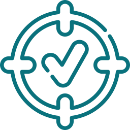
Proven Results

Domestic, commercial and industrial

Affordable/ low-cost

Ethically made products
What our clients say about ChoiceChem
